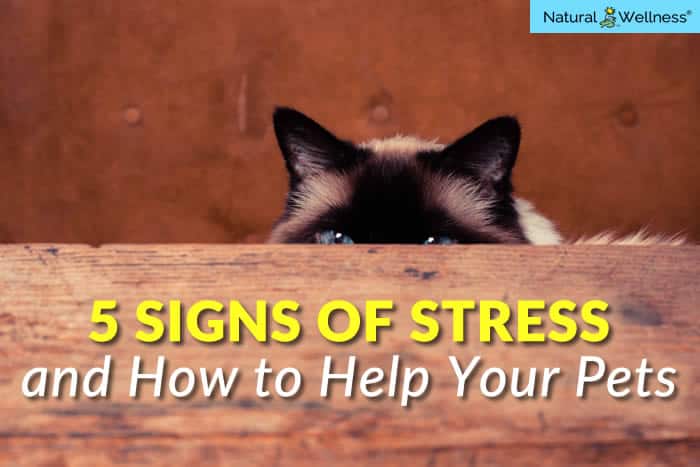

Your canine and feline companion can be different in their expressions of stress, but there are still many signs that are quite similar.
The 5 Most Common Signs of Stress in Household Pets
- Hiding
- Failure to interact with certain family members
- Aggression toward all or even just certain people or other animals
- Crouching postures
- Bearing teeth and vocalization
You may even notice subtle facial expressions with the eyebrows, ears and the way the pet’s muzzle can be puckering. Animals, unlike humans, will either become very submissive, attempt to run or give it their all, or even become aggressive at times to get out of a situation. This is called the “fight-or-flight” response and it is very normal. Remember, they can’t tell you they don’t like the situation they are in.
This is nature’s way of telling you to STOP.
How You Can Reduce Your Pet’s Stress
Identify and realize something is wrong and work to resolve it. Do not ignore the issue and allow it to continue.
- If your pet gets stressed with company, perhaps placing your pet in a bedroom with their bedding, food and water and letting them have an evening alone will help.
- Having weekend or long term guests? Perhaps suggest a hotel for your guests. Boarding is just as or even more stressful for your pet; they live in the home and deserve preferential treatment.
- Is your pet not fond of children? Don’t allow children near them. Most children do not understand to leave the pet alone and, in most cases, when a pet acts out the pet is blamed.
- Reducing stress in your pets often comes down to simple common sense. One of my biggest rules with cats when they are stressed is: LEAVE THEM ALONE. They do much better with being provided a safe spot with food, water and a potty box nearby versus someone stressing over them.
- If there are other situations of environmental stress such as thunderstorms or fireworks, many times getting a pet into a room with no windows can help. They even make specials jackets meant for environmental stress for dogs.
Don’t be afraid to ask your veterinarian for help! That is what they are there for. Many times they can help with behavior modification, as well as make sure your pet is not ill (sometimes this is why they are acting stressed), or even prescribing necessary medications if nothing else is helping. Veterinarians can even refer their canine patients to the right trainer if necessary for behavior modification.
It’s our job as pet owners to make our pets feel safe and loved. We invite them into our busy lives and it is only fair that we make sure they receive the care and respect they deserve.




